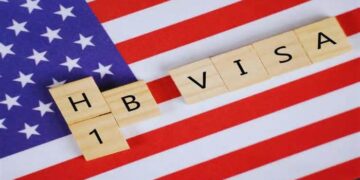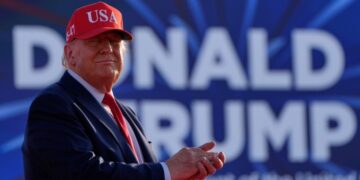Sri Lanka cuts policy rates to reduce inflation and boost economic recovery

On June 1, Sri Lanka’s central bank cut policy interest rates by 250 basis points, the first for a “historic contraction” of the island nation’s economy in 2022, which it said would curb high inflation and spur growth.
The Monetary Board of the Central Bank of Sri Lanka has decided to cut the policy rate by 250 basis points, saying inflation is falling faster than expected.
The bank’s board held a meeting on May 31. They cut the central bank’s Standard Deposit Facility Rate (SDFR) and Standard Lending Facility Rate (SLFR) by 250 basis points to 13.00% and 14.00% respectively.
“The Board has taken this decision to ease monetary conditions in line with faster-than-expected inflation, gradual easing of inflationary pressures and further anchoring of inflation expectations,” the central bank said.
“The start of such demonetisation is expected to provide an impetus for the economy to recover from the historically tight activity seen in 2022, while easing pressures on financial markets,” it said in a statement.
“Inflation is projected to ease significantly in the near term, reaching single-digit levels earlier than expected,” the report added.
The Government Statistics Office has announced that inflation was recorded at 25.2 per cent in May from 35.3 per cent in April.
The rupee has depreciated to 295 against the US dollar from 360 in January.
Official reserves improved by more than $3 billion by the end of May.
Debt-ridden Sri Lanka is still struggling to normalize its crisis-hit economy after announcing its first default in April last year, with inflation expected to drop to single digits.
The central bank said the economy was showing signs of recovery after the IMF bailout in March.
The IMF extended a $3 billion bailout facility to Sri Lanka.
“Inflows into the domestic foreign exchange market remain strong following the approval of the International Monetary Fund’s [IMF] Extended Fund Facility [EFF]”.
Also, financial assistance from international development partners such as the Asian Development Bank (ADB) and the World Bank and progress in the debt restructuring process are expected to help the recovery.
India announced this week that it would extend $1 billion in facilities to import essential goods in early 2022, as the country grappled with long queues for supplies and fuel in the early days of the economic crisis.
India extended a line of credit to Sri Lanka at the height of the country’s economic crisis.
In line with India’s ‘neighbourhood first’ policy, India last year provided around $4 billion in multilateral aid to Sri Lanka through several lines of credit and monetary support.
According to official figures, Sri Lanka’s total debt is $83.6 billion, of which external debt is $42.6 billion and domestic debt is $42 billion.
In April 2022, Sri Lanka announced its first debt default, the worst economic crisis since independence from Britain in 1948, fueled by a foreign exchange shortage that fueled public protests.
Months of street protests led to the ouster of then-President Gotabaya Rajapaksa in mid-July. After refusing to tap the backing of the global lender, Mr. Rajapaksa opens IMF talks.

















